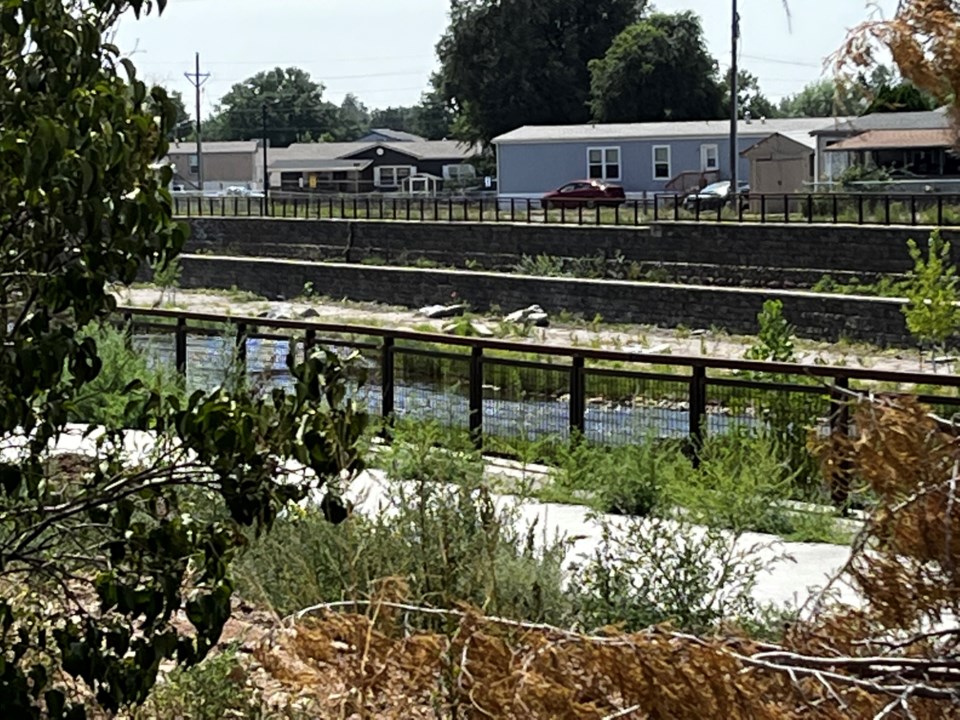The Longmont Leader accepts contributions, photos, and op-eds for publication from community members, business leaders and public officials on local topics. Publication will be at the discretion of the editor and published opinions do not represent the views of the Longmont Leader or its staff. To submit a contribution, email [email protected].
In September 2013, flash flooding displaced hundreds of people in Longmont alone, counting homes destroyed or made temporarily uninhabitable, as well as people out of work because their workplaces were put out of action. According to the Denver Post [9/1/2018], Longmont’s total cost of recovery was approaching $500M by the end of 2018. That recovery is still not complete.
On August 9, the Longmont City Council will, I hope, refer a bond issue to the November ballot. If it passes, it will fund the last steps of removing inhabited areas of Longmont from the FEMA 100-year floodplain. The last area to be rebuilt is called the Hover Reach.
After the flood, the environmental group Stand with our St. Vrain advocated for Longmont’s flood recovery to be done in an environmentally sensitive way. They lobbied for extra-wide building setbacks along the river corridors to protect river habitat. At their insistence, the City pioneered environmental impact evaluation practices, specifically the Sustainability Evaluation System (SES) that serves us well today, based on a method called the Triple Bottom Line. Longmont’s City Council approved the flood mitigation design for the Hover Reach that did the least ecological damage to the river channel, though designs with more commercial advantages were considered.
Triple Bottom Line is an accounting framework used to make prudent, equitable decisions in any enterprise. It’s also called the “three P’s” for People, Planet, and Profit. Longmont uses it to evaluate its policies and practices. It means balancing the value of activities not only in terms of monetary return on investment (Profit), but also in terms of equitable outcomes for the affected People, and their environmental impact (Planet). All three P’s are important.
Lately, Stand with our St. Vrain has been working to protect a colony of bank swallows that nests near the Hover Reach. They want the city to commit to leaving the colony site untouched when excavating the Hover Reach. They are asking voters to reject the bond issue unless that is guaranteed.
Now, leaving the colony undisturbed would mean redesigning the flood mitigation project, causing new delays. Tying the colony’s safety to the bond issue would make the bonds unmarketable because the cost of the project would be so uncertain. Without the bond funds, the recovery project will grind to a halt. This puts the restoration work already done to the east at risk, including beautiful Dickens Farm Park. Longmont would remain unprotected from more loss of life and property like what we saw in 2013.
The Save the Swallows campaign focuses entirely on the Planet bottom line. It doesn’t recognize the cost to Longmont. It leaves out the impact on the public if the Hover Reach project doesn’t go forward. Some of Longmont’s most vulnerable residents live in the floodplain now. It doesn’t make sense to insist on leaving the swallow colony undisturbed without considering the consequences of doing so. Voters need to understand the potential human and economic cost of voting no.
I write today to remind voters that it’s important to protect habitat, but the other two bottom lines must be considered, too. We must ensure that our people and our economy are not devastated by another flood that could have been avoided. Good government means completing the Resilient St. Vrain Project at a reasonable cost and with care for the people now in the floodplain. All Longmont voters should support this.
Oh, and don’t worry about the bank swallows. Our Public Works department is committed to providing alternative habitat for the colony if the Hover Reach excavation upsets the current site. Nature alters riparian habitat between nesting seasons all the time, and the returning swallow colonies adapt. Life finds a way. This time, Longmont has promised to help Nature along.
Marcia Martin
Marcia Martin represents Ward 2 on the Longmont City Council. Opinions expressed here are her own and do not necessarily represent the policy position of the City of Longmont.
Correction: This article has been updated to clarify the figures used in the first paragraph, and to correct a misrepresentation about Stand with our St. Vrain's position on the Split Flow design. That organization endorsed the Triple Bottom Line and the Sustainability Evaluation System in a 2019 letter originally published in the Longmont Observer, but did not directly endorse Split Flow.


